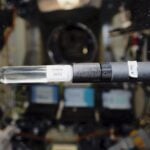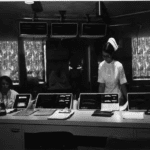Excimer Laser Angioplasty System
Inducted In: 1994, Health, Medicine
Excimer Laser Angioplasty, utilizing a laser system initially developed for satellite-based atmospheric studies, is now a powerful instrument for treating heart disease. Excimer laser technology was initially pioneered at NASA’s Jet Propulsion Laboratory for remote sensing of the ozone layer. Other laser types are too hot for delicate coronary surgery and could damage tissue, cause blood vessel spasms, or create blood clots. The excimer is a `cool` laser that uses ultraviolet light energy to operate at 65° C, a temperature human tissue can tolerate.
Laser angioplasty is a procedure where a thin fiber-optic catheter is inserted into an artery in the leg and threaded to a blockage in a coronary artery. A tiny optical assembly diffuses the laser strand into a small cone-shaped laser beam as it is emitted from the catheter. The non-thermal laser vaporizes blockages in the artery without damaging delicate tissue. The procedure can be performed in a non-surgical setting using a local anesthetic. The hospital stay is minimal, and there is less post-operative pain, discomfort, and risk to the patient. Developed by Advanced Interventional Systems, Inc., the Dymer 200+ excimer laser angioplasty system vaporizes the buildup of fatty deposits – called plaque – in the arteries. It is safer than coronary bypass operations and offers wider utility than balloon angioplasty. In clinical trials the success rate in opening blocked coronary arteries was shown to be 85 percent, with fewer complications than in balloon angioplasty. In January 1992, the system received Food and Drug Administration approval for treatment of coronary disease.
Related Technologies

Bubble Detector
Inducted In: Featured, Health, Public Safety
Canada’s Bubble Technology Industries (BTI) created the Bubble Detector to detect and record levels of neutron radiation exposure to humans. The detector is a small vial about the size of your thumb. It is small enough and portable enough to…

Apollo 70 Cardiac Care Monitoring System
Inducted In: Featured, Health, Medicine
Founded in 1958, Spacelabs Healthcare approached NASA with their concept of a real-time system for monitoring astronauts’ vital signs while in orbit, including a telemetry system to simultaneously transmit the data back to Earth. From 1962 to 1967, Spacelabs was…

Programmable Implantable Medication System
A family of biomedical implantable devices have been developed over the past decade which are based on a wide array of space technologies, including battery advances, miniaturized circuitry, digital telemetry, and electronic sensing systems. The initial device was the rechargeable…
